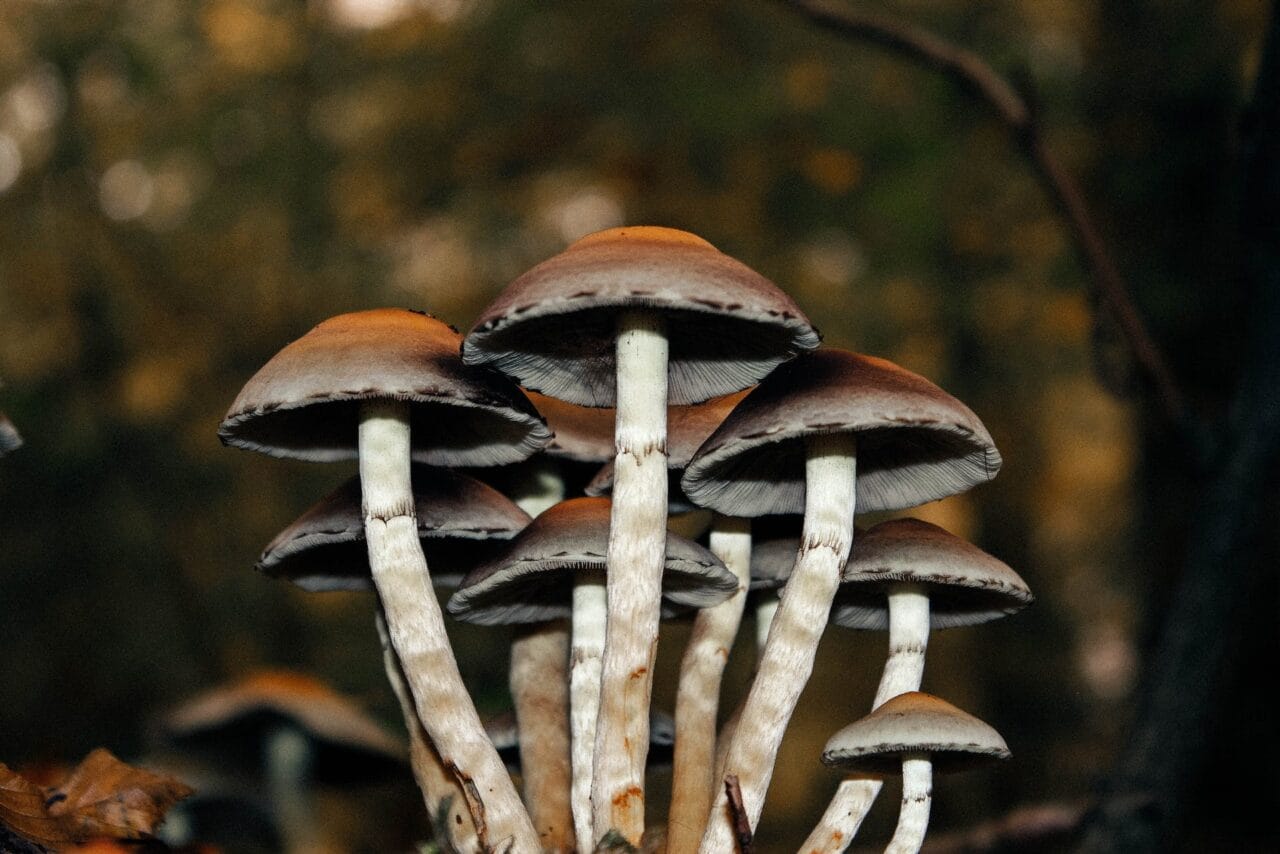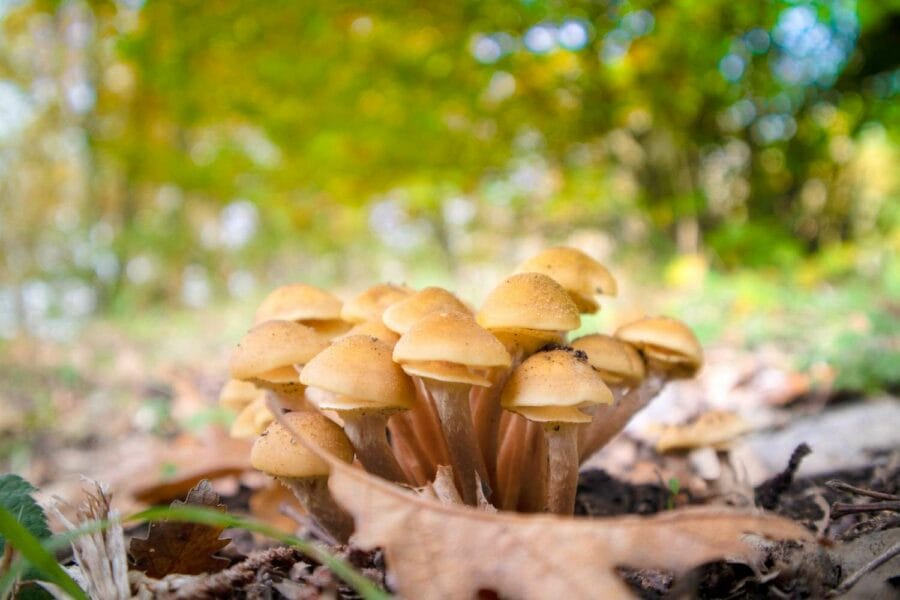Psilocybin, a psychoactive compound present in magic mushrooms, is commonly utilized for its euphoric and hallucinogenic effects when used recreationally.
In addition to its mind-altering properties, research has been conducted on the compound’s potential for providing relief from chronic pain.
This article delves into a case study that investigates the potential of microdosing mushrooms as a method for alleviating chronic pain.
Key Takeaways:
- Microdosing mushrooms could potentially provide immediate and sustained relief from pain.
- When compared to traditional pain medications, psilocybin microdosing generally shows no side effects when used in small quantities.
- Psilocybin engages with the serotonin 2A (5-HT2A) receptors to alleviate pain, among other conditions.

The Study
Dr. Matthew Lyes and his team from the Division of Pain Medicine in the Department of Anesthesiology at the University of California, San Diego conducted the study titled “Microdosing Psilocybin for Chronic Pain: A Case Series“. Their research centered around three patients who self-administered small doses of psilocybin to manage their chronic pain symptoms.
Three Patients, One Result – Chronic Pain Relief
Patient # 1
| AGE/ GENDER: | 37 Male |
| PAIN TYPE: | Neuropathic pain occurring below a spinal cord injury site. |
| PAIN INTENSITY: | Initially 4 to 5/ 10, rising to 8/ 10 later in the day |
| PSILOCYBIN DOSE: | 250 mg of ground mushroom for less than 6 months |
| OUTCOME: | Discontinuation of prescribed pain medication, reduction in muscle spasms, and improved bowel movement regularity. No signs of rebound pain or withdrawal symptoms were observed. |
| The patient noted that while his usual medications only managed to dull the pain, psilocybin effectively eliminated it, reducing his average pain level from 5 to 0. | |
Case Study Analysis: Subject #2
| AGE/ GENDER: | 69-year-old Female |
| TYPE OF PAIN: | Complex Regional Pain Syndrome (CRPS) |
| INTENSITY OF PAIN: | Typically 5 to 7 out of 10, escalating with physical activity and during pain exacerbations |
| PSILOCYBIN DOSAGE: | Regular consumption of 500 mg daily for a week to 10 days, followed by rest periods (2 to 3 days) over a year. Dosage raised to 750 mg to 1 gram during periods of severe pain |
| IMPACT: | Pain reduction by 80% for 3-4 hours, slowly reverting to original levels after 12 hours. Full pain alleviation (90%-100%) persists 6-8 hours, reverting to original levels after 18 hours. |
| The subject experiences a decrease in appetite without associated nausea. When the dosage is elevated (750 to 1000mg), disorientation or unsteady walking is observed. | |
Case Study Analysis: Subject # 3
| AGE/ GENDER: | 40-year-old Female |
| TYPE OF PAIN: | Lumbar radiculopathy and neuropathic pain |
| INTENSITY OF PAIN: | Constant 8 out of 10, surges to 10 out of 10 during physical activities |
| PSILOCYBIN DOSAGE: | 1000 mg ingested from a mushroom-infused chocolate bar every two months. |
| IMPACT: | Significant pain relief with no psychoactive effects observed. Notable enhancement in flexibility and functionality. Pain gradually reverts to initial levels over 2-4 weeks. Recurring dosing aids in better pain management. |
| The subject does not report any significant physical, cognitive, or behavioural side effects. Her overall mood remains stable. She continues with her regular dosage of SSRI for managing depression throughout the psilocybin treatment period. | |
Deciphering Pain Management via Psilocybin
Continuous signals of somatic and visceral pain strengthen certain neural pathways due to peripheral and central sensitization, resulting in the chronic sensation of pain, both physically and mentally. Psychedelics like psilocybin can activate 5-HT2A receptors, potentially resetting the brain regions related to neuropathic conditions.
One patient reported enduring pain relief lasting for weeks. This suggests that after direct stimulation of the 5-HT2A receptors, a central regulation of pain perception and
The brain’s adaptability plays a significant role in the effects of psilocybin.
Potential Side Effects of Psilocybin Compared to Conventional Pain Relievers
| PSILOCYBIN (Based on Research) | CONVENTIONAL PAIN RELIEVERS |
| Muscle spasms | Nausea |
| Reduced appetite | Abdominal discomfort |
| Confusion | Migraines |
| Unstable walk | Dependency |
| No mood alteration | Sleepiness |
Future Research Possibilities for Psilocybin
The research team identified several areas that could benefit from further investigation, based on the experiences of three participants.
- Potential for immediate and durable relief from neuropathic pain through small doses of psilocybin, without the risk of physical tolerance or addiction.
- Examine the outcomes of various treatment approaches used in conjunction with psilocybin. For example, patient #3 reported improved pain relief when psilocybin was used along with physical therapy.
- Small doses of psilocybin may provide pain relief, even without the addition of psychotherapy, as demonstrated in this case study. The researchers hypothesize that incorporating therapeutic guidance may enhance or extend the therapeutic benefits.
Study Limitations
Although the study’s findings are encouraging, it’s important to acknowledge the identified limitations.
- The small number of participants may not accurately represent the broader population of neuropathic pain sufferers.
- The study did not involve any participants who did not respond to psilocybin.
- There were no assessments conducted before and after treatment to determine psilocybin’s impact on psychiatric conditions like depression and anxiety.
- Most data was based on self-reporting by the participants.
- The interviewer’s presence and potential bias relating to psilocybin could have influenced participants’ responses.
- The study did not investigate the potential influence of the placebo effect.
- The study did not measure the amount of psilocybin in each mushroom.
The Practice of Microdosing Mushrooms
As per this study, both Patient #1 and Patient #2 consumed a microdose of powdered psilocybin derived from dried mushrooms. On the other hand, Patient #3 combined it with chocolate. Numerous products are available that are specifically designed for psilocybin microdosing, and we have compiled a list of some of them below.
Dehydrated Mushrooms
Although the study doesn’t mention the exact strain used, the following strain is recommended for those new to the practice.
- Golden Teacher: This is one of the most prevalent and widely recognized strains of magic mushrooms.
- Amazonian Cubensis: This strain is known for its user-friendly nature and potential cognitive benefits.
- Cambodian: Microdosing with Cambodian cubensis mushrooms is believed to enhance concentration, social awareness, and mood.
Microdose Capsules
- Euphoria Psychedelics – Micro Calm Capsules: This concoction contains Ashwagandha, Reishi, CBD, Valerian root, and Psilocybin Mushrooms, all of which have been scientifically shown to alleviate anxiety and stress.
- Ground Sounds – Microdose Capsules – Champion Lover: This intriguing mix offers three dosage options: 50mg, 100mg, or 250mg of pure psilocybin combined with reishi, cacao, cordyceps, and maca.
- Kind Stranger – Brighten Capsules 250mg: These capsules feature the Golden Teacher strain, which is renowned for fostering clarity, boosting creativity, and enhancing focus.
The Use of Psilocybin for Pain Relief
While the research on mushrooms’ ability to alleviate pain is still in preliminary stages, anecdotal evidence and small-scale case studies are pointing towards promising results.
Such instances underscore the importance of continued research into the possible benefits of psilocybin, class=”wp-block-list”>
Especially in the field of managing chronic pain.
Before psilocybin became broadly accepted as a means to alleviate pain, the hopeful stories from the case study gave comfort to those afflicted with chronic pain.
Frequently Asked Questions
What are the effects of psilocybin microdosing?
Primarily, psilocybin activates a serotonin receptor known as “5-HT2A” in the prefrontal cortex, which causes two significant effects:
- Induces the production of “Brain-Derived Neurotrophic Factor” (BDNF)
- Enhances “Glutamate” transmission
Moreover, psychedelics foster connections between brain regions that typically do not interact. This unique connectivity is a result of psychedelics’ ability to decrease the activity of the “Default Mode Network” (DMN), which is associated with various cognitive functions, such as daydreaming, introspection, and contemplating the past and future.
What is the primary benefit of microdosing mushrooms?
Microdosing may enhance mood, productivity, creativity, and concentration. Its most extensively researched benefit is its effect on mental health.
In November 2022, the mental health company, COMPASS Pathways, disclosed the findings of their comprehensive phase 2b trial, a randomized double-blind study. Their research indicated that a single psilocybin dose significantly reduced depressive symptoms compared to a placebo. Participants who were given a higher dose of 25 milligrams showed a lasting antidepressant response at the twelve-week follow-up.
A study published in the Psychiatry Research Journal suggested that psilocybin is more effective than traditional antidepressant treatments.
How should you determine your dosage?
Start with a 0.1-gram dose of psilocybin mushrooms on the first day. If the desired effects are not achieved, you can slowly increase your dose by 0.05 grams on subsequent microdosing days until you reach your preferred level.
Individuals with a history of using psychotropic drugs may need to increase the dosage to 0.5 grams to obtain the desired effects.
What precautions should be taken before consuming mushrooms?
class=”wp-block-list”>What is the suggested frequency for taking microdoses of mushrooms?
There exist several well-recognized protocols proposing structured schedules for microdosing psychedelics. These protocols primarily differ in the amount of “off” days they incorporate, which are the days when you abstain from microdosing.
The most commonly suggested protocols recommend including 1-3 rest days between microdoses. This aligns with the body’s inherent tolerance mechanisms. The three protocols under consideration here are the Fadiman Protocol, the Stamets Stack, and intuitive microdosing.




